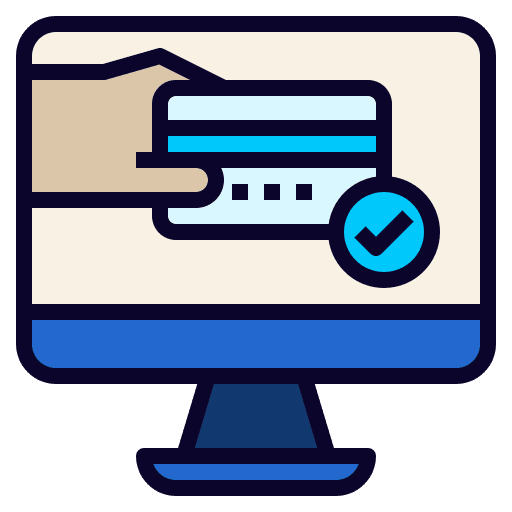MOTO Merchant Account

Mail order/telephone order payment processing
A MOTO (Mail Order or Telephone Order) merchant account is perfect for merchants looking to process orders made by mail or telephone. E-commerce and retail stores should consider MOTO merchant accounts for credit card processing. Many companies in these industries see high rates of MOTO payments.
Zen Payments is the best choice for accepting MOTO payments. We have years of experience helping merchants accept MOTO payments. We'll get you set up with a MOTO merchant bank account and ready to accept MOTO payments within one to two weeks.

WHY ARE MOTO MERCHANT ACCOUNTS
CONSIDERED HIGH-RISK?
If you've accepted MOTO payments, you may have faced holds or even been shut down just for taking credit or debit card payments. That's because many merchant services and payment processing companies consider MOTO payment processing high-risk. The main reason it has the designation is because the credit card isn't present when transactions are made. This type of credit card processing puts the payment processor at risk of dealing with a higher rate of chargebacks and potential fraud.
Choose a High-Risk Payment Processor
To ensure your MOTO merchant account stays active, you'll need to work with high-risk payment processors who regularly provide merchant accounts to MOTO businesses. They'll understand the risks and provide tools to mitigate fraud and chargebacks. These types of merchant services providers typically charge higher processing fees, but you'll have peace of mind knowing your account is secure and you won't face holds.

CHARGEBACK PREVENTION &
MERCHANT SERVICES
If you are a high-risk merchant or in a high-risk industry, you may have found it difficult to find a payment processor who will work with you. This makes it impossible to accept credit card payments.
Zen Payments is different. We have years of experience working with high-risk merchants. We'll get you set up with a merchant account, payment gateway, and whatever type of processing your business needs to be successful, whether that's a virtual terminal or a Point-of-sale system. Process payments and set up recurring billing with our payment processing solutions.

SET UP A
VIRTUAL TERMINAL
If you are a high-risk merchant or in a high-risk industry, you may have found it difficult to find a payment processor who will work with you. This makes it impossible to accept credit card payments.
Zen Payments is different. We have years of experience working with high-risk merchants. We'll get you set up with a merchant account, payment gateway, and whatever type of processing your business needs to be successful, whether that's a virtual terminal or a Point-of-sale system. Process payments and set up recurring billing with our payment processing solutions.

SET UP SECURE CREDIT CARD PROCESSING FOR
MAIL ORDER TELEPHONE TRANSACTIONS
If you are a high-risk merchant or in a high-risk industry, you may have found it difficult to find a payment processor who will work with you. This makes it impossible to accept credit card payments.
Zen Payments is different. We have years of experience working with high-risk merchants. We'll get you set up with a merchant account, payment gateway, and whatever type of processing your business needs to be successful, whether that's a virtual terminal or a Point-of-sale system. Process payments and set up recurring billing with our payment processing solutions.
WHAT ARE THE BENEFITS OF A
MOTO MERCHANT ACCOUNT FROM ZEN PAYMENTS
Prevent Potential Theft
Generate detailed reports to track inventory more effectively and identify potential retail theft. You can also integrate your ordering and purchasing systems seamlessly.
Affordability
As specialists in high-risk retail payment solutions, we offer competitive pricing without excessive charges or fees. Our services are tailored to fit your budget, no matter the size or scope of your business.
Smoother Transactions
We minimize checkout friction—those inconsistencies or distractions that disrupt the process—ensuring your customers enjoy seamless transactions that keep them coming back.
Partnership With Over 15 Financial Institutions
We proudly collaborate with a network of over 15 banks and financial institutions, allowing us to find the ideal long-term partner for your MOTO merchant account.
Dependable Customer Support
Whether you're new to MOTO payments or have used them for years, our experienced support team is here to help. We're available by phone during regular business hours to answer questions and solve issues, with 24/7 email support ensuring prompt responses.

WHY CHOOSE ZEN PAYMENTS AS YOUR MOTO MERCHANT ACCOUNT
PROVIDER AND PAYMENT PROCESSOR?
At Zen Payments, we're experts in payment processing with over 15 years of experience in the e-commerce industry. When you set up an e-commerce merchant account with us, you're partnering with a company that truly understands the ins and outs of MOTO merchant services. We'll get you up and running quickly, even if you're in a high-risk category, so you can start accepting debit and credit card payments within weeks.
Get Started Today!
Enjoy a Zen
Customer Experience
We know that businesses that accept mail-order telephone payments often face challenges with other payment processing providers. While some may turn you away because of card-not-present transactions, we welcome your business. We value every customer and understand the unique obstacles you encounter. With Zen Payments, you can focus on meeting your customer's needs and growing your business—we'll handle the payment processing for you.
Worried about getting approved? We work with new merchants with a short credit history and lack of financial statements. We have a 98% approval rating and work with all major credit card providers, so we'll get you through the application process and accepting MOTO payments in no time!
Need a merchant
Account?
If you're seeking a payment processing platform that can positively impact your business, Zen Payments is here to assist. Get started today by contacting us online or calling our merchant services specialists at 844-661-0725. We'll get you approved quickly so you can accept online donations within a couple of days.
Apply Now


